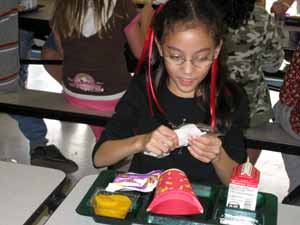Teaching Your Child Self-Care Skills

By the time your child starts grade school, they have probably learned the basics of how to dress, wash their hands, brush their teeth, and use the toilet independently. But now that your child is older, some of the self-care skills needed to master are a little more complicated.
Self-Care Skills
- Taking a bath or shower by themself
- Washing, combing, and brushing their hair
- Choosing a hairstyle and maintaining it
It’s important to focus on these grooming and hygiene activities during the early years of grade school when other children their age are learning the same skills, as poor self-care has social implications. Because your child may have to do these things primarily by touch, they’ll probably need some extra practice before feeling confident. You can help by giving specific feedback about your child’s appearance and plenty of practice.
Concepts of Modesty and Privacy
At this point in your child’s life, it’s important for them to understand the concept of modesty and the difference between public and private behavior. They may not realize or care that others can see if they are using the toilet with the bathroom door open or the window shade up. Explain why taking a bath, undressing, scratching an itch, and other behaviors should be done in private. That may seem silly or hard to understand at first, but with your help, they’ll begin to recognize what behavior isn’t acceptable in front of others.
Ensure Privacy
- Close the bathroom door and pull down the window shade before you use the toilet or undress to take a bath or shower.
- Close your bedroom door before you take off your clothes to put on your pajamas.
- Be sure your zippers are zipped and buttons are buttoned when you get dressed in the morning.
- Do the same thing before you leave the bathroom.
Tips for Organizing the Bathroom
- Assign specific places for all the things your child uses.
- If several bottles are the same size and shape, add a visual or tactile label to identify each one. For example, put a rubber band around the shampoo bottle and leave the conditioner unmarked.
- Keep a bath towel that will stay dry while bathing but within easy reach.
If your child has low vision, remember the importance of using color contrast to make objects stand out. It can be hard to find a bar of white soap in a white soap dish on a white counter. Putting the soap in a dark-colored soap dish will make it much easier for your child to find.
Bathing
When you teach your child a new skill or routine, it’s a good idea to break down the activity into its different parts. List the steps, and then take them one at a time to see if they need to be adapted in any way.
Bathing Steps
- Locate a clean towel and place it in a particular location near the shower or tub
- Regulate the water temperature before stepping into the shower or tub
- Know how to adjust the temperature quickly if the water suddenly gets too cool or too hot
- Wet and soap the washcloth to clean one part of your body
- Rinse and soap the washcloth to clean each part of her body
- Rinse your body thoroughly
- When finished, rinse the washcloth and wring out the excess water
- Turn off the shower (or let the tub drain)
- Dry your body thoroughly
- Hang up the wet washcloth and damp towel
If your child isn’t sure how to get the right amount of shampoo or conditioner on their hair, show them how to put a small amount in their palm and then rub the liquid into their hair. Also, explain that if one small amount doesn’t create enough lather, add a little more shampoo to their palm and repeat the hand-to-head routine.
Hair Care
Many children have strong opinions about the style and length of their hair. Whatever style your child chooses—and you can live with—let them know that you expect them to take responsibility for brushing, combing, and keeping their hair looking neat. If your child is not adept at it yet, show them how by using hand-under-hand techniques.